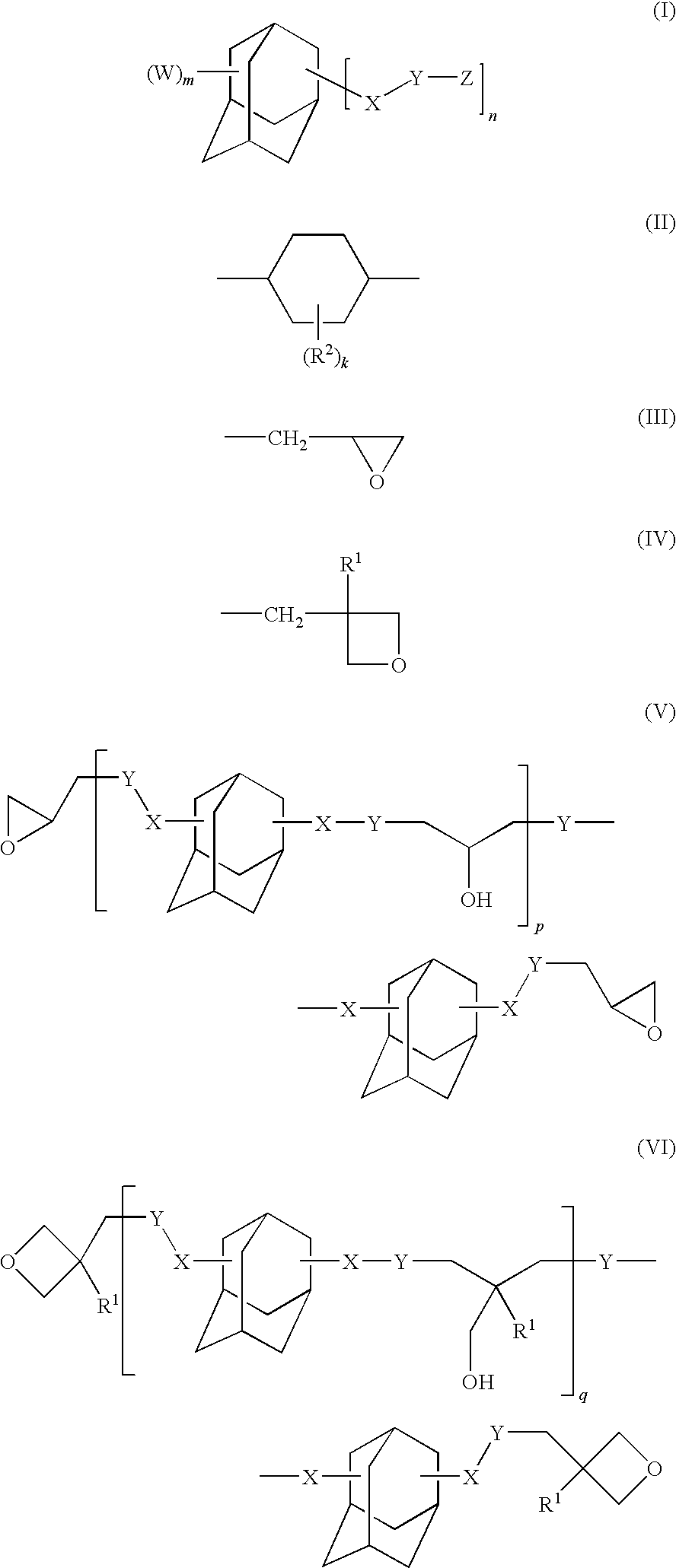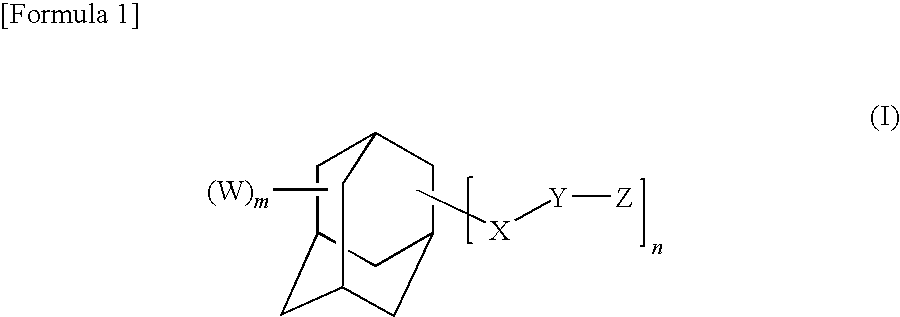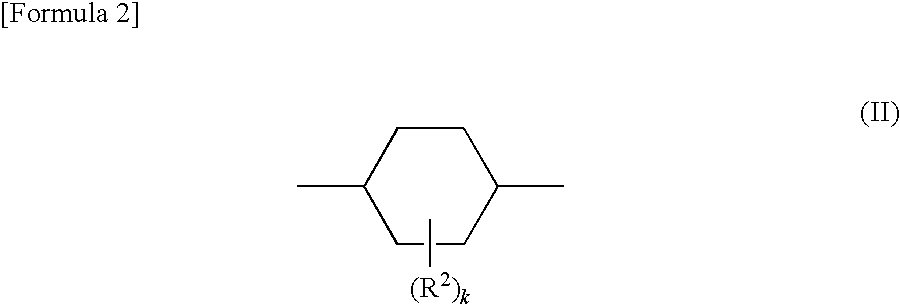Adamantane derivative, epoxy resin, and optical electronic member using resin composition comprising them
a technology of epoxy resin and adamantane, which is applied in the direction of organic chemistry, solid-state devices, semiconductor/solid-state device details, etc., can solve the problems of deterioration of electric characteristics, insufficient impact strength and adhesion strength to metals and the like, and cyclic aliphatic epoxy resin cured by epoxidizing a carbon-carbon double bond is brittle, and achieves excellent optical characteristics such as long-term heat resistan
- Summary
- Abstract
- Description
- Claims
- Application Information
AI Technical Summary
Benefits of technology
Problems solved by technology
Method used
Image
Examples
example 1
(1) Synthesis of 1,3-bis(4-glycidyloxycyclohexyl)adamantane
[0092]In an autoclave having an inner volume of 100 ml were charged 8.0 g of 1,3-bis(4-glycidyloxyphenyl)adamantane (227 epoxy equivalents), 0.5 g of a rhodium catalyst (manufactured by N.E. Chemcat Corp., trade name 5% Rh Carbon), and 20 g of tetrahydrofuran, and then the atmosphere of the system was replaced with hydrogen gas. The reaction was carried out for about 5 hours with stirring at 50° C. under the hydrogen pressure of 4 MPa until lowering of the hydrogen pressure stopped. After the reaction, the catalyst was removed by filtration and then the solvent by distillation to obtain the intended product, 1,3-bis(4-glycidyloxycyclohexyl)adamantane, shown by the following formula.
[0093]The ratio of ring-hydrogenation in the product was 99% as measured by the decrease of a UV absorbance (at the wavelength of 275 nm). The epoxy equivalent of the product was 264 and the ratio of the remaining epoxy was 88%.
[0094]The obtained ...
example 2
(1) Synthesis of 2,2-bis(4-glycidyloxycyclohexyl)adamantane
[0098]In an autoclave having an inner volume of 100 ml were charged 8.0 g of 2,2-bis(4-glycidyloxyphenyl)adamantane (227 epoxy equivalents), 0.5 g of a rhodium catalyst (manufactured by N.E. Chemcat Corp., trade name 5% Rh Carbon), and 20 g of THF, and then the atmosphere of the system was replaced with hydrogen gas. The reaction was carried out for about 5 hours with stirring at 50° C. under the hydrogen pressure of 4 MPa until lowering of the hydrogen pressure stopped. After the reaction, the catalyst was removed by filtration and then the solvent by distillation to obtain the intended product, 2,2-bis(4-glycidyloxycyclohexyl)adamantane, shown by the following formula.
[0099]The ratio of ring-hydrogenation in the product was found to be 98% as measured by the decrease of a UV absorbance (at the wavelength of 275 nm). The epoxy equivalent of the intended product was 258 and the ratio of the remaining epoxy was 90%.
(2) Produc...
PUM
| Property | Measurement | Unit |
|---|---|---|
| temperature | aaaaa | aaaaa |
| temperature | aaaaa | aaaaa |
| reaction temperature | aaaaa | aaaaa |
Abstract
Description
Claims
Application Information
 Login to View More
Login to View More - R&D
- Intellectual Property
- Life Sciences
- Materials
- Tech Scout
- Unparalleled Data Quality
- Higher Quality Content
- 60% Fewer Hallucinations
Browse by: Latest US Patents, China's latest patents, Technical Efficacy Thesaurus, Application Domain, Technology Topic, Popular Technical Reports.
© 2025 PatSnap. All rights reserved.Legal|Privacy policy|Modern Slavery Act Transparency Statement|Sitemap|About US| Contact US: help@patsnap.com



